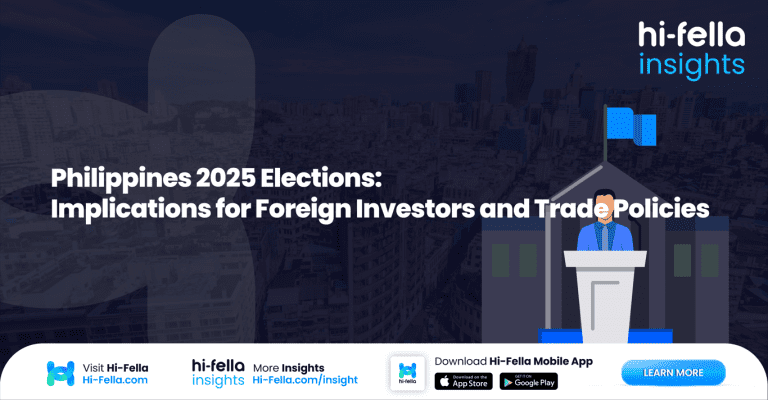Unlocking the world of commodity trade opens up a fascinating realm for those looking to diversify their portfolios and navigate economic uncertainties. Commodities are real things like gold, oil, and crops. They can be influenced by global economic conditions, how much of them there is (supply and demand), and how the world is doing politically. Seems interesting, right? It’s time for you to diversify your investments! Explore the opportunities and considerations of investing in commodities for a robust portfolio.
Definition of commodity and its types
Commodities are assets similar to stocks and bonds, consisting of products typically sourced from the earth, characterized by uniform quality and production by numerous producers. Major examples include cotton, oil, corn, gold, and uranium, which serve as raw materials for various industries. Commodities can be interchanged if they share the same grade, allowing companies to use cocoa from different countries to produce consistent chocolate quality. There are three primary types of commodities that are divided into categories based on their uses and characteristics:
- Agricultural: These include coffee, corn, sugar, soybeans, and wheat, essential for both human and livestock consumption.
- Energy: Energy commodities encompass crude oil for transportation and plastics, natural gas for electricity generation, and gasoline for vehicles.
- Metals: Precious metals like gold and silver are used for jewelry and various industrial purposes, while copper is widely utilized in electrical wiring.
How does the world affect commodity prices?
Commodity prices are subject to a complex interplay of natural events, economic factors, geopolitical issues, and market dynamics. Understanding these factors is crucial for anyone looking to navigate the world of commodity investments. These factors are the key that make commodity prices fluctuate.
- Mother nature
Natural disasters and extreme weather events, such as bushfires, hurricanes, or earthquakes, can disrupt commodity production and supply chains. For example, an earthquake in Chile in 2010 suspended production at major mines, affecting about 20% of the country’s capacity.
- Supply and demand
The balance between supply and demand is crucial in determining commodity prices. Knowledge of production data from major producing nations, like Chile for copper and Russia for nickel, is essential for assessing total output and supplies. Alternative data sources, like satellite imagery, also provide insights into the supply chain.
- Storage levels & transportation constraints
Transportation constraints and storage requirements along the supply chain can impact commodity prices. Exchange warehouse stocks, satellite data, and AIS shipping data offer insights into transportation and storage of commodities worldwide.
- Geopolitics
Political issues in regions where commodities are extracted can affect prices. Events like the Iranian attack on Saudi Arabia in 2019 disrupted oil production, leading to a 20% price increase. Workers striking at copper-producing mines and trade disputes between major economies, like the US and China, also contribute to price volatility.
- Market Information
Economic indicators such as economic outputs, unemployment rates, inflation, and the availability of substitute goods influence commodity prices. The health of the world’s largest economies plays a significant role in commodity pricing.
- Seasonality
Seasonal patterns, including variations by day of the week, week of the month, and month of the year, impact commodity prices. For example, oil prices tend to rise on Fridays, and factors like the US driving season and hurricane season affect various commodities.
Strategies for investing in commodities
If you consider investing in commodities, you need to consider these strategies to help you. Each investment approach has its own set of risks and rewards, catering to different investor preferences and risk tolerance levels. Understanding these options is crucial when considering investments in commodities. Investing in commodities offers several avenues for investors and traders to participate in this asset class:
- Futures Contracts
Futures are a high-risk, high-reward way to speculate on commodities. They allow investors to use leverage to potentially gain significant profits if the trade goes in their favor. However, they also entail the risk of substantial losses if the trade moves against them.
- Physical Ownership
Investors can directly own physical commodities, such as precious metals, by purchasing bullion or coins. While this provides a hedge against inflation, it carries the risk of theft and may require careful storage.
- ETFs of Physical Commodities
Exchange-Traded Funds (ETFs) offer a convenient way to gain exposure to physical commodities without owning them directly. These ETFs provide market-based pricing and eliminate the risks associated with physical ownership and storage.
- Stocks of Commodities Producers
Investing in companies that produce commodities allows investors to benefit from rising commodity prices and increased production, potentially leading to higher profits.
- ETFs of Commodities Producers
ETFs that hold a portfolio of commodities producers offer diversification and focused exposure to specific commodity sectors, such as gold mining or oil production.
Risks associated with commodity investments
Although it has many benefits, investing in commodities also comes with a range of risks, including external factors, speculative trading, and the potential for fraudulent schemes. Being informed and cautious is essential for those considering investments in commodities. These are the risks that investors should be aware of:
- Uncontrollable Factors
Commodity prices are highly sensitive to external factors beyond an investor’s control, including inflation, weather conditions, political unrest, foreign events, new technologies, and even rumors. These factors can lead to significant and unexpected price fluctuations, and investors must be prepared for the possibility of a total loss of their investment.
- Speculative Risks
Commodity markets, like stock and bond markets, attract traders who aim to make short-term profits through speculation on price movements. It’s essential for investors to understand market dynamics, identify market participants, and distinguish between commercial users and speculators to make informed decisions.
- Risk of Fraud
Fraudulent activities can pose a threat to investors in commodity markets. To mitigate this risk, thorough research and due diligence are necessary when choosing a firm or platform for commodity investments. However, in some cases, fraud may be challenging to detect, emphasizing the importance of vigilance.
Discover top commodities suppliers for your commodity trade at Hi-Fella, an online platform that acts as a bridge for suppliers and buyers from around the world. Seize your opportunity to source quality products by taking a look at our website, downloading our app on Play Store or App Store, and signing up for an account. Take action and explore a world of possibilities with Hi-Fella now!






